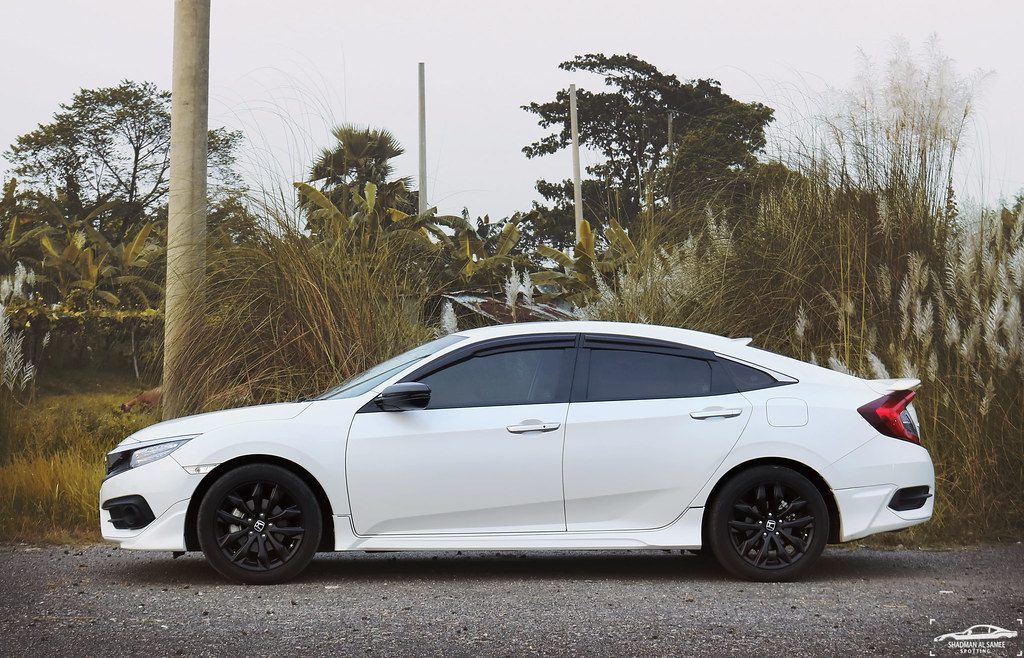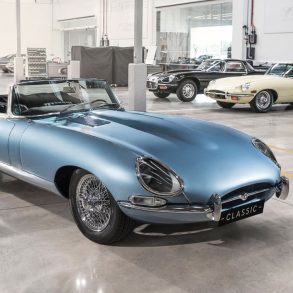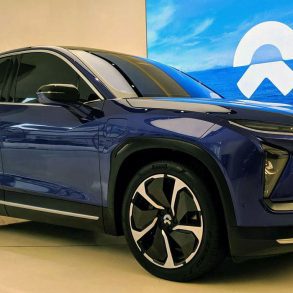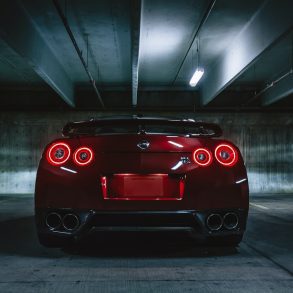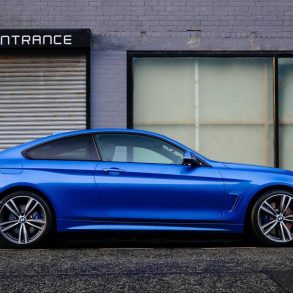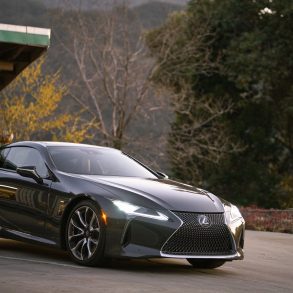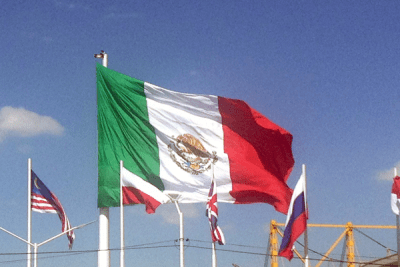 President Donald Trump has offended the Mexicans in more than one way, and building even a virtual wall between the US and Mexico will affect trade between the two powers in a negative way, which would greatly affect the automotive industry, perhaps more than any other. Thanks to the North American Free Trade Agreement, a great number of carmakers have set up manufacturing facilities south of the Rio Grande to benefit from more than just lower wages to produce their lowest-margin vehicles. Any disturbance in the free trade agreement, most likely import duties, would increase costs for these manufacturers and have a negative impact on consumer prices in the US. Ford has already withdrawn plans to build a new US$1.6 billion plant in central Mexico’s San Luis Potosi in January in favor of a US$700 million upgrade to its Flat Rock, Michigan plant and others may think twice before becoming the target of one of Trump’s Twitter rages. However, as the US is shunning Mexico, the Chinese are more than happy to step in and invest in the growing market.
President Donald Trump has offended the Mexicans in more than one way, and building even a virtual wall between the US and Mexico will affect trade between the two powers in a negative way, which would greatly affect the automotive industry, perhaps more than any other. Thanks to the North American Free Trade Agreement, a great number of carmakers have set up manufacturing facilities south of the Rio Grande to benefit from more than just lower wages to produce their lowest-margin vehicles. Any disturbance in the free trade agreement, most likely import duties, would increase costs for these manufacturers and have a negative impact on consumer prices in the US. Ford has already withdrawn plans to build a new US$1.6 billion plant in central Mexico’s San Luis Potosi in January in favor of a US$700 million upgrade to its Flat Rock, Michigan plant and others may think twice before becoming the target of one of Trump’s Twitter rages. However, as the US is shunning Mexico, the Chinese are more than happy to step in and invest in the growing market.
The success of Mexico
But first we need to look at what made Mexico such a phenomenal automotive production hub, and why automakers from outside North America have invested more than US$13.3 billion in Mexico since 2010, which is more than half of the US$24 billion invested in total. Ironically, Mexico’s low wages make up only a small portion of the explanation, as the biggest reason to build in Mexico is that the country has freer trade with the rest of the world than the US does: Mexican-made cars can be exported duty-free to 44 countries compared to just 20 for US-made cars, which make up only 9% of global car sales.
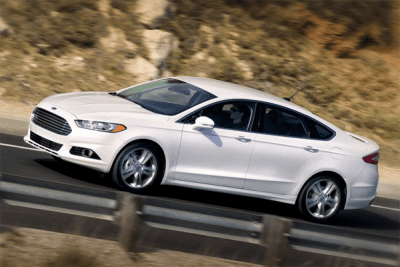 Even though Mexican auto workers earn about 18% of what their US equivalents do, saving US$600 on assembling a midsized car, transportation costs largely negate that advantage as they’re US$300 higher to Europe and US$600 to the United States. Besides savings of $1.500 on Mexico-produced parts, the real key is having free trade deals with those 44 countries, which saves as much as $2.500 on exporting a midsized car to Europe and even more on a more expensive BMW or Audi, as the European Union levies a 10% import tax on US-made vehicles but not on Mexico-made cars. The real reason for Mexico’s appeal to auto manufacturers isn’t just the low wages, but the freer market compared to the US, which president Trump is trying to shrink even more.
Even though Mexican auto workers earn about 18% of what their US equivalents do, saving US$600 on assembling a midsized car, transportation costs largely negate that advantage as they’re US$300 higher to Europe and US$600 to the United States. Besides savings of $1.500 on Mexico-produced parts, the real key is having free trade deals with those 44 countries, which saves as much as $2.500 on exporting a midsized car to Europe and even more on a more expensive BMW or Audi, as the European Union levies a 10% import tax on US-made vehicles but not on Mexico-made cars. The real reason for Mexico’s appeal to auto manufacturers isn’t just the low wages, but the freer market compared to the US, which president Trump is trying to shrink even more.
A shrinking importance of the US
And while the automotive industry is a great scapegoat for president Trump, the United States has a trade surplus with Mexico in all other goods and services combined outside of the auto industry, according to US statistics. And thanks to its free trade agreements, Mexico is getting less and less dependent on the NAFTA for its trade. At the moment, Mexico still sends 2 million cars a year to the US, which is more than half its total production, but thanks to its generous free trade agreements with other countries, those shipments are making up less of Mexico’s total exports every year. By next year, an estimated 28% of Mexico’s production will be exported to countries outside of North America, up from about 18 percent in 2015.
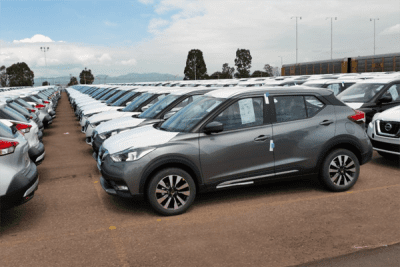 Besides exports to South America and other markets, Mexico’s home market is increasing in relevance too, as the Mexican car market is one of the fastest growing markets in the Americas and the #2 market in Latin America. 2015 sales in Mexico jumped 19% to 1.35 million, breaking the record set in 2006, and grew another 19% in 2016 to over 1,6 million for a population of 110 million. And the growth perspective for Mexico is even better-looking, as the market is just one tenth of the US market, which has triple the population. And Canada sells about 2 million cars a year in a population of a third of Mexico’s. But the biggest difference between the US and Canadian markets on one side and the Mexican market on the other is that the former are at the peak of their growth cycle while the latter continues to grow in the coming years. Mexico is the second-largest economy in Latin America and about half of all new cars sold there are produced domestically.
Besides exports to South America and other markets, Mexico’s home market is increasing in relevance too, as the Mexican car market is one of the fastest growing markets in the Americas and the #2 market in Latin America. 2015 sales in Mexico jumped 19% to 1.35 million, breaking the record set in 2006, and grew another 19% in 2016 to over 1,6 million for a population of 110 million. And the growth perspective for Mexico is even better-looking, as the market is just one tenth of the US market, which has triple the population. And Canada sells about 2 million cars a year in a population of a third of Mexico’s. But the biggest difference between the US and Canadian markets on one side and the Mexican market on the other is that the former are at the peak of their growth cycle while the latter continues to grow in the coming years. Mexico is the second-largest economy in Latin America and about half of all new cars sold there are produced domestically.
If not the Americans, others will step in
 So now that we’ve established that the Mexican car market is an important and growing market by itself, in addition to a huge export potential, it leaves you wondering who may step in to that potential if Trump does act on his promises to close the borders. Well, for one the South-Koreans already have stepped in, as neither Hyundai nor Kia had a presence in the Mexican market until 2014 when the former started sales, while the latter arrived in Mexico a year later, building a production facility in Nuevo Leon in Northern Mexico, which plans to export 80% of production, mainly to the US and Latin American markets. By 2016, both brands were top-10 players and held a combined 5,9% of the market, with Kia taking the largest chunk of those sales thanks to its local production.
So now that we’ve established that the Mexican car market is an important and growing market by itself, in addition to a huge export potential, it leaves you wondering who may step in to that potential if Trump does act on his promises to close the borders. Well, for one the South-Koreans already have stepped in, as neither Hyundai nor Kia had a presence in the Mexican market until 2014 when the former started sales, while the latter arrived in Mexico a year later, building a production facility in Nuevo Leon in Northern Mexico, which plans to export 80% of production, mainly to the US and Latin American markets. By 2016, both brands were top-10 players and held a combined 5,9% of the market, with Kia taking the largest chunk of those sales thanks to its local production.
But now the Chinese are stepping in as well, with both JAC and Great Wall planning to build production plants in Mexico in the near future. Jianghuai Automobile Co. has become the first Chinese automaker to produce cars in Mexico, now that its CKD (Complete Knock Down) plant in Hidalgo has launched production of kits imported from China. The company is partially owned by Mexican telecoms tycoon Carlos Slim, and total investment adds up to over US$200 million. In Mexico City, JAC launched sales of two locally assembled subcompact crossover models on March 28th, the JAC S2 and S3. Over the next four years, the plant will ramp up annual production to 10,000 vehicles. JAC already has a sales distribution network in Brazil and has been planning to start production there, but hasn’t received much cooperation from the local authorities there. Mexico seems more welcoming to Chinese investment, and as a result, Great Wall is contemplating building a plant in either Nuevo Leon or San Luis Potosi as well, according to sources. Great Wall already has a presence in Chile, Costa Rica and Uruguay and is aiming for a piece of the domestic market in Mexico as well.
 Chinese automotive brands already have a growing presence in South America, taking an 8% share of the total market in Chile and 0,5% of the much larger markets of Brazil and Argentina. Exports from Mexico would be duty-free and would also help the brands get a foothold in the large domestic market, which the South-Koreans have proven to be conquerable. If America is ready to let go of its closest allies, someone else is always ready to step in. China has been looking for an opportunity to increase its influence in the South American economies, and the automotive industry has always been a high profile industry to establish not only individual brands but also the credibility of a nation as a whole. If Chinese carmakers manage to get a foot into the Mexican car market, their logical next step will be to start exports to North America by the time their quality and brand recognition starts to catch up with their Asian rivals.
Chinese automotive brands already have a growing presence in South America, taking an 8% share of the total market in Chile and 0,5% of the much larger markets of Brazil and Argentina. Exports from Mexico would be duty-free and would also help the brands get a foothold in the large domestic market, which the South-Koreans have proven to be conquerable. If America is ready to let go of its closest allies, someone else is always ready to step in. China has been looking for an opportunity to increase its influence in the South American economies, and the automotive industry has always been a high profile industry to establish not only individual brands but also the credibility of a nation as a whole. If Chinese carmakers manage to get a foot into the Mexican car market, their logical next step will be to start exports to North America by the time their quality and brand recognition starts to catch up with their Asian rivals.

